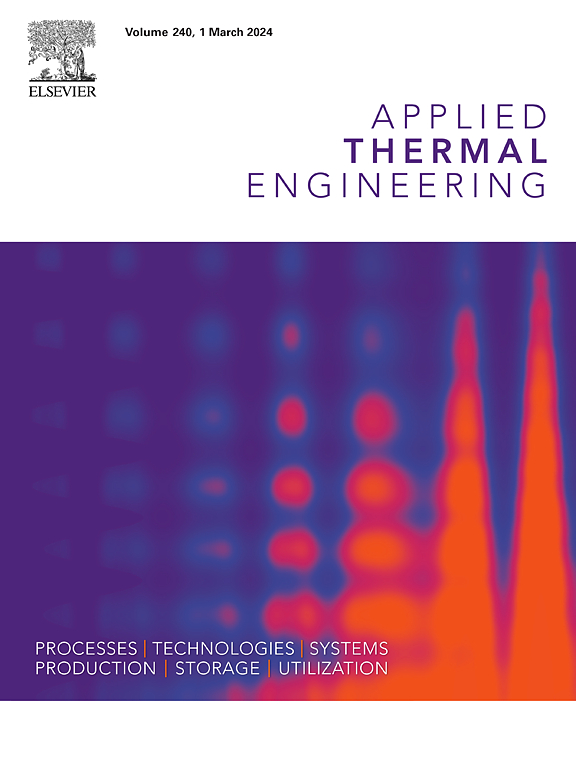Enhanced heat transfer in finned designs for biomedical materials in a pneumatic extruder
IF 6.1
2区 工程技术
Q2 ENERGY & FUELS
引用次数: 0
Abstract
This study presents an integrated experimental and numerical investigation of heat transfer and melting efficiency in a pneumatic-based extruder for synthetic biomedical materials (SBMs). The research focuses on understanding phase transition dynamics and optimizing fin configurations to enhance thermal performance. A computational model was developed and validated against experimental data, demonstrating strong agreement in melting fraction evolution, phase transition characteristics, and temperature distribution. Velocity field analysis confirmed that thermal conduction played a dominant role throughout the melting process, as the high material viscosity restricted buoyancy-driven flow. The results reveal that the melting process is predominantly governed by conduction due to the high viscosity of polyethylene glycol-polycaprolactone (PEG-PCL), which suppresses natural convection. Comparative analysis of various fin inclinations highlights that a 40° fin configuration provides the most significant enhancement, reducing melting time by 21% compared to the no-fin case. Enhancement ratio analysis further confirms that proper fin inclination improves heat penetration and overall melting efficiency. Additionally, temperature distribution and melt fraction evolution showed that heat penetration was initially concentrated near the heated surface before diffusing inward. These findings provide valuable insights into optimizing thermal management strategies in pneumatic extrusion systems for biomedical applications.
在气动挤出机生物医学材料翅片设计中增强传热
本研究对合成生物医学材料(SBMs)的气动挤出机的传热和熔化效率进行了综合实验和数值研究。研究的重点是了解相变动力学和优化翅片结构,以提高热性能。建立了一个计算模型,并根据实验数据进行了验证,表明熔点演化、相变特征和温度分布具有很强的一致性。速度场分析证实了热传导在整个熔化过程中起主导作用,因为材料的高粘度限制了浮力驱动的流动。结果表明,由于聚乙二醇-聚己内酯(PEG-PCL)的高粘度抑制了自然对流,熔融过程主要受传导控制。不同翅片倾角的对比分析表明,40°的翅片结构提供了最显著的增强,与无翅片情况相比,减少了21%的熔化时间。增强比分析进一步证实,适当的翅片倾角可以提高热渗透和整体熔化效率。此外,温度分布和熔体分数演变表明,热渗透最初集中在受热表面附近,然后向内扩散。这些发现为优化生物医学应用气动挤压系统的热管理策略提供了有价值的见解。
本文章由计算机程序翻译,如有差异,请以英文原文为准。
求助全文
约1分钟内获得全文
求助全文
来源期刊

Applied Thermal Engineering
工程技术-工程:机械
CiteScore
11.30
自引率
15.60%
发文量
1474
审稿时长
57 days
期刊介绍:
Applied Thermal Engineering disseminates novel research related to the design, development and demonstration of components, devices, equipment, technologies and systems involving thermal processes for the production, storage, utilization and conservation of energy, with a focus on engineering application.
The journal publishes high-quality and high-impact Original Research Articles, Review Articles, Short Communications and Letters to the Editor on cutting-edge innovations in research, and recent advances or issues of interest to the thermal engineering community.
 求助内容:
求助内容: 应助结果提醒方式:
应助结果提醒方式:


